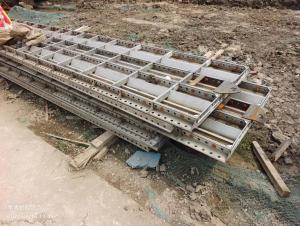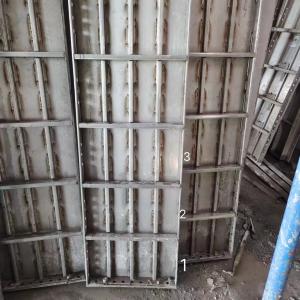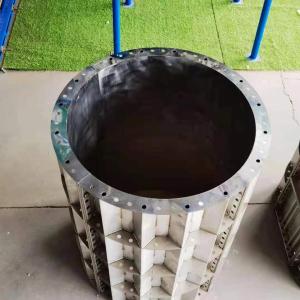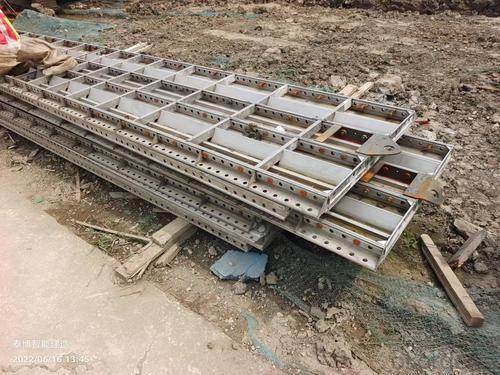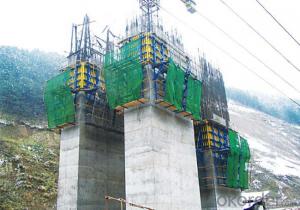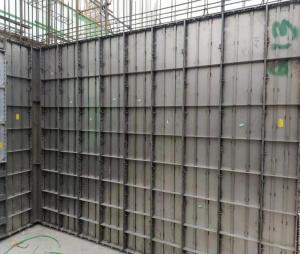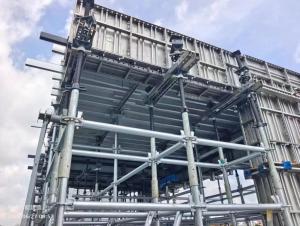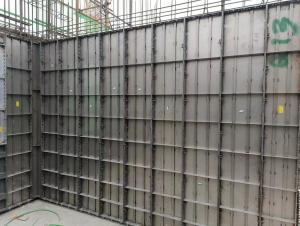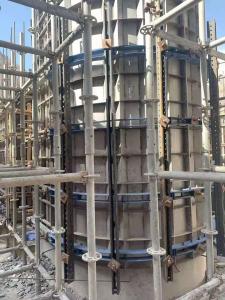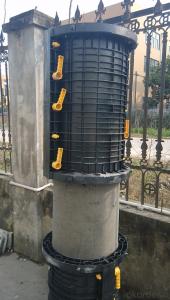Hot seller-column steel formwork,metal formwork, Stainless Steel Formwork
- Loading Port:
- Shanghai
- Payment Terms:
- TT or LC
- Min Order Qty:
- 1 set
- Supply Capability:
- 1000000 set/month
OKorder Service Pledge
OKorder Financial Service
You Might Also Like
Stainless steel formwork
Replaceable size aluminum formwork :400X1200mm , 400X1500mm
A modular panel formwork, specially designed for on-site concrete jobs where a fair – faced finish is required or where extremely high concrete pressure occur.
The panels are made of a high-quality painted steel frame and a top quality 5mm stain less steel sheeting. The sheet lies on top of the profiles so the joints between the panels are reduced to a very thin line
Advantages:
1 Stainless steel formwork, 100% follow the design of aluminum alloy formwork system, it is interchangeable, compatible and can be used together with aluminum formwork at the same time .
2It is made of high-strength stainless steel strip by rolling and laser welding. It has good corrosion resistance and high density,is not easy to rust and has no fire hazard.
3Long service life, many turnover times, high recycling value
The number of turnovers is large, especially the characteristics of no dust, no need to brush or less mold release agent, and the characteristics of low renovation costs will bring unlimited optimistic prospects to it.
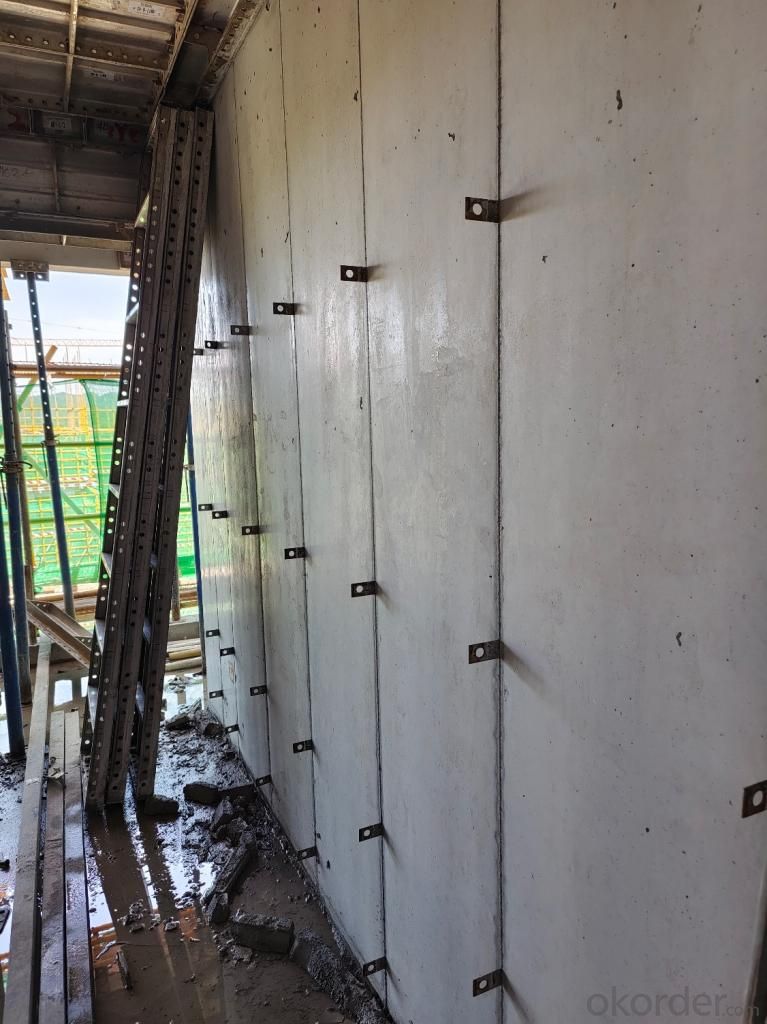
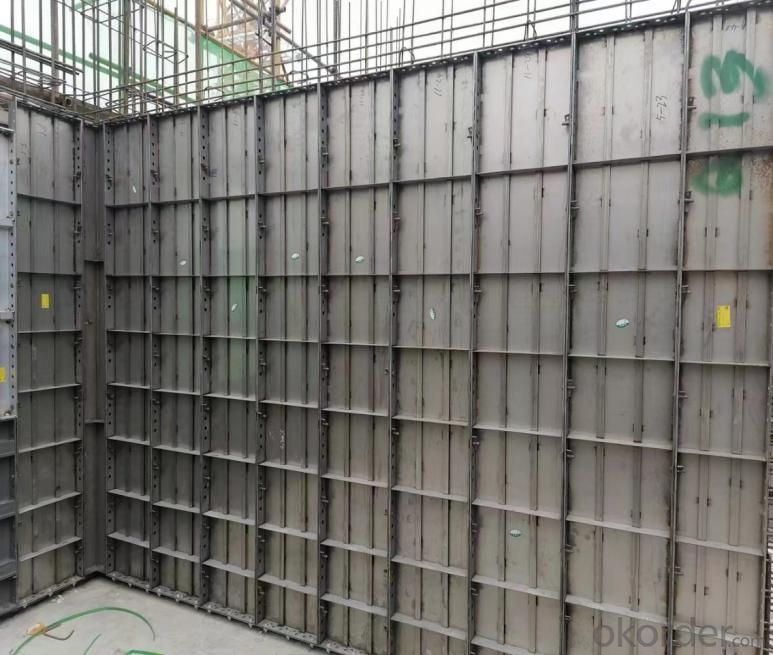
- Q: How does steel formwork affect the quality of the concrete finish?
- Steel formwork can have a significant impact on the quality of the concrete finish. Firstly, steel formwork provides a rigid and stable structure, ensuring that the concrete is poured and cured accurately and evenly. This helps in maintaining the desired shape, dimensions, and alignment of the concrete structure, resulting in a smooth and consistent finish. Additionally, steel formwork offers a superior surface finish compared to other types of formwork, such as wood or plastic. The smooth and non-absorbent nature of steel minimizes the risk of surface imperfections, such as air bubbles, honeycombing, or formwork marks, which can adversely affect the aesthetics and durability of the concrete finish. Steel formwork is also highly resistant to moisture and chemical reactions, which can occur during the setting and curing process of concrete. This reduces the likelihood of efflorescence, staining, or discoloration, ensuring a more visually appealing and attractive concrete finish. Furthermore, the use of steel formwork allows for greater precision and control over the concrete pouring process. The tight joints and accurate alignment of steel formwork prevent the leakage of excess water or cement paste, leading to a denser and more durable concrete surface. This, in turn, enhances the strength, durability, and longevity of the finished concrete structure. Overall, steel formwork plays a crucial role in ensuring the quality of the concrete finish by providing stability, precision, and a smooth surface. Its ability to minimize surface imperfections, resist moisture and chemical reactions, and enhance the overall strength and durability of the concrete makes it an ideal choice for achieving high-quality concrete finishes.
- Q: What are the common safety precautions when working with steel formwork in high winds?
- When working with steel formwork in high winds, there are several common safety precautions that should be followed to ensure the safety of workers and the integrity of the formwork. 1. Secure the formwork: It is essential to properly secure the steel formwork to prevent it from being blown away by strong winds. This can be achieved by using appropriate anchoring methods such as tie-downs, braces, or clamps. Adequate bracing should be installed at regular intervals to provide additional stability. 2. Regular inspections: Regular inspections of the formwork should be conducted before, during, and after high wind events. This includes checking for any signs of damage or weakness in the formwork structure, loose connections, or compromised anchoring. Any issues identified should be addressed promptly to prevent accidents or further damage. 3. Reinforce the formwork: In areas with high wind activity, it may be necessary to reinforce the steel formwork to withstand the stronger forces. This can be done by adding additional support beams, cross-bracing, or wind-resistant features to the structure. The reinforcement should be designed and implemented by a qualified engineer to ensure its effectiveness. 4. Provide personal protective equipment (PPE): Workers should be provided with appropriate personal protective equipment to protect them from potential hazards during high wind conditions. This may include safety helmets, goggles, gloves, and high-visibility clothing to enhance visibility for other workers and equipment operators. 5. Monitor weather conditions: Regular monitoring of weather conditions is crucial when working with steel formwork in high winds. If there are predictions or signs of strong winds, work should be temporarily suspended until the wind speeds decrease to safe levels. It is important to have a reliable weather monitoring system in place to stay informed about changing weather conditions. 6. Training and communication: All workers involved in working with steel formwork should receive proper training on the safety precautions and procedures to follow during high wind situations. Clear communication channels should be established to ensure that workers are aware of any changes in weather conditions or safety protocols. By following these common safety precautions, the risks associated with working with steel formwork in high winds can be minimized, ensuring the well-being of workers and the successful completion of the construction project.
- Q: How does steel formwork contribute to the overall fire safety of the building?
- Steel formwork contributes to the overall fire safety of the building in several ways. Firstly, steel is a non-combustible material, meaning it does not burn or contribute to the spread of fire. This helps to minimize the risk of fire spread and containment breaches within the structure. Additionally, steel formwork provides structural stability and strength, which is crucial during a fire event as it helps to maintain the integrity of the building and prevents structural collapse. Steel also has a high melting point, allowing it to withstand high temperatures for longer periods before it weakens, providing additional time for evacuation and firefighting efforts. Overall, the use of steel formwork enhances the fire resistance of the building, ensuring the safety of occupants and minimizing potential damage.
- Q: How does steel formwork affect the overall moisture resistance of the structure?
- Steel formwork can have both positive and negative effects on the overall moisture resistance of a structure. On one hand, steel formwork provides a rigid and impermeable barrier to prevent water penetration into the concrete during the construction phase. This can be particularly beneficial in areas with high moisture content or where water infiltration could compromise the integrity of the structure. However, steel formwork may also contribute to the overall moisture resistance challenges. Unlike other formwork materials such as wood or plastic, steel is prone to corrosion when exposed to moisture over extended periods. If the steel formwork is not properly protected or maintained, it can develop rust, which can weaken its structural integrity and potentially compromise the overall moisture resistance of the structure. Additionally, steel formwork can create a thermal bridge within the structure. Steel has a high thermal conductivity, meaning that it can easily transfer heat or cold from one side to another. This can lead to condensation issues and potential moisture problems if proper insulation or vapor barrier measures are not taken. To mitigate these potential drawbacks, it is crucial to apply appropriate anti-corrosion coatings and ensure proper maintenance of the steel formwork. Additionally, adequate insulation and vapor barrier systems should be installed to minimize the impact of thermal bridging and prevent condensation issues. Overall, while steel formwork can provide initial protection against moisture during construction, it is important to address its vulnerabilities to corrosion and thermal bridging to maintain the overall moisture resistance of the structure in the long term.
- Q: What are the different types of supports used in steel formwork construction?
- Some of the different types of supports used in steel formwork construction include adjustable steel props, steel beams, scaffolding systems, and cantilever brackets. These supports are essential for providing stability and strength to the formwork structure during the pouring and curing of concrete.
- Q: What are the considerations when designing steel formwork for retaining walls?
- When designing steel formwork for retaining walls, several considerations need to be taken into account. First, the formwork should be strong enough to withstand the pressure exerted by the wet concrete, ensuring it does not collapse or deform during the pouring process. Additionally, the formwork should be able to resist the lateral pressure exerted by the soil behind the retaining wall. Proper bracing and reinforcement are crucial to ensure stability. The formwork should also be designed to allow for easy removal once the concrete has cured, considering factors such as the type of release agent used and the desired finish of the wall. Lastly, considerations should be given to factors such as cost, time, and ease of assembly and disassembly, as these can impact the overall efficiency and effectiveness of the formwork.
- Q: What are the different types of coatings available for steel formwork panels?
- There are several types of coatings available for steel formwork panels, each offering unique benefits and applications. 1. Galvanized Coating: This is one of the most common types of coatings used for steel formwork panels. It involves applying a layer of zinc to the surface of the steel through a process called galvanization. Galvanized coatings provide excellent corrosion resistance, making them suitable for outdoor and high-moisture environments. 2. Epoxy Coating: Epoxy coatings are known for their superior chemical and abrasion resistance. They are applied as a two-part system that combines resin and a hardener. Epoxy coatings create a strong, durable surface that can withstand heavy use and exposure to various chemicals. They are often used in industrial settings or where high performance is required. 3. Polyurethane Coating: Polyurethane coatings offer excellent resistance to abrasion, impact, and weathering. They are commonly used in applications where a high level of durability is needed, such as in construction projects or infrastructure development. Polyurethane coatings also provide good adhesion to the steel surface, ensuring long-lasting protection. 4. Powder Coating: Powder coating is a dry finishing process where a fine powder is electrostatically applied to the steel surface. It is then cured under heat to form a hard, protective layer. Powder coatings come in a wide range of colors and provide excellent resistance to chipping, scratching, and fading. They are commonly used for aesthetic purposes or in applications where a decorative finish is desired. 5. Zinc-rich Coating: Zinc-rich coatings are similar to galvanized coatings, but they contain a higher concentration of zinc particles. These coatings provide enhanced corrosion protection and are often used in highly corrosive environments, such as marine or coastal areas. Zinc-rich coatings can be applied either by spraying or brushing. 6. Fire-resistant Coating: Fire-resistant coatings are specifically designed to provide protection against the spread of fire. These coatings create a barrier that delays the heating of steel, helping to prevent the structural collapse of a building during a fire. Fire-resistant coatings are commonly used in commercial and industrial buildings, as well as in infrastructure projects. It is important to consider the specific requirements of the project and consult with experts to determine the most suitable coating for steel formwork panels. Factors such as the environment, expected durability, and budget should be taken into account to ensure optimal performance and longevity.
- Q: How does steel formwork contribute to better site organization?
- Steel formwork contributes to better site organization by providing a durable and reusable system for creating concrete structures. Its accuracy, strength, and ease of assembly allow for efficient and precise construction, reducing the need for on-site adjustments or modifications. This results in a well-organized and streamlined construction process, saving time and resources. Additionally, steel formwork's versatility enables the creation of complex shapes and designs, enhancing the aesthetic appeal of the site.
- Q: What are the typical corrosion protection measures for steel formwork systems?
- Typical corrosion protection measures for steel formwork systems include the use of protective coatings such as galvanization or paint, regular cleaning and maintenance to remove any corrosive agents or debris, and the application of corrosion inhibitors or rust preventatives. Additionally, proper storage and handling practices, including keeping the formwork dry and protected from moisture, can also help prevent corrosion.
- Q: How does steel formwork handle vibrations from construction equipment?
- Steel formwork is known for its excellent strength and durability, which enables it to effectively handle vibrations from construction equipment. The rigid nature of steel formwork allows it to withstand the impact and oscillations caused by heavy machinery or equipment without significant deformation or damage. Additionally, the structural stability and stiffness of steel formwork help to minimize any unwanted movement or shaking during construction activities, ensuring a stable and reliable foundation for the construction process.
Send your message to us
Hot seller-column steel formwork,metal formwork, Stainless Steel Formwork
- Loading Port:
- Shanghai
- Payment Terms:
- TT or LC
- Min Order Qty:
- 1 set
- Supply Capability:
- 1000000 set/month
OKorder Service Pledge
OKorder Financial Service
Similar products
Hot products
Hot Searches
Related keywords
